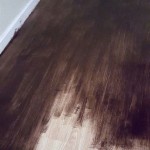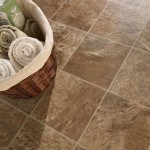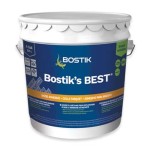Is Vinyl Flooring Toxic? An In-Depth Examination
Vinyl flooring, a ubiquitous material in modern construction and renovation, is prized for its affordability, durability, and water resistance. However, concerns about its potential toxicity have lingered for years, prompting consumers and industry professionals alike to question its safety. Understanding the composition of vinyl flooring and the potential risks associated with its manufacturing, installation, and lifecycle is crucial for making informed decisions.
Vinyl flooring, also known as polyvinyl chloride (PVC) flooring, is a synthetic material derived from ethylene and chlorine. The manufacturing process involves the polymerization of vinyl chloride monomer (VCM) to create PVC resin. This resin is then combined with various additives, including plasticizers, stabilizers, pigments, and fillers, to achieve the desired properties of the final flooring product. The type and concentration of these additives significantly influence the overall safety profile of the vinyl flooring.
The toxicity concerns surrounding vinyl flooring primarily stem from three key areas: the potential release of volatile organic compounds (VOCs), the presence of phthalates, and the risks associated with the manufacturing and disposal processes.
Volatile Organic Compounds (VOCs)
VOCs are organic chemicals that evaporate at room temperature and can contribute to indoor air pollution. Many building materials, including flooring, paints, adhesives, and furniture, emit VOCs. Exposure to VOCs can cause a range of health effects, including eye, nose, and throat irritation, headaches, dizziness, and, in some cases, more serious health problems like respiratory issues and damage to the nervous system.
Vinyl flooring can emit VOCs, particularly during and immediately after installation. The primary sources of VOCs in vinyl flooring are the plasticizers, adhesives used for installation, and other additives. The type and amount of VOCs emitted vary depending on the specific product, the manufacturing process, and the age of the flooring. Older vinyl flooring formulations and less reputable manufacturers often use higher levels of VOC-emitting additives.
Formaldehyde, while not inherently present in the vinyl itself, can be found in the adhesives used to install some types of vinyl flooring, particularly sheet vinyl. Formaldehyde is a known human carcinogen and can cause respiratory irritation, allergic reactions, and other health problems. Therefore, it's vital to choose low-VOC adhesives when installing vinyl flooring.
To mitigate VOC emissions, consumers should opt for low-VOC or VOC-free vinyl flooring options. These products typically undergo rigorous testing and certification processes to ensure they meet stringent emission standards. Certifications such as FloorScore, GreenGuard Gold, and UL GREENGUARD demonstrate that the flooring has been tested and meets specific VOC emission limits.
Proper ventilation during and after installation is also essential to minimize exposure to VOCs. Opening windows and using air purifiers can help dissipate the emitted chemicals and improve indoor air quality. Allowing the flooring to off-gas in a well-ventilated area before installation can further reduce the initial VOC concentration.
Furthermore, choosing flooring products with a low odor rating can be an indicator of lower VOC content. However, odor alone is not a reliable measure of VOC emissions, as some VOCs are odorless. Relying on certifications and product specifications is a more effective way to assess VOC levels.
Phthalates: Plasticizers of Concern
Phthalates are a group of chemicals commonly used as plasticizers to make PVC flexible and pliable. They are not chemically bound to the PVC polymer and can leach out over time, potentially exposing individuals to these chemicals. This leaching is exacerbated by heat, sunlight, and physical wear.
Concerns about phthalates stem from their potential endocrine-disrupting effects. Endocrine disruptors are chemicals that can interfere with the body's hormonal system, potentially leading to adverse health outcomes, including developmental problems, reproductive issues, and increased risk of certain cancers. Studies have linked phthalate exposure to disruptions in hormone balance, affecting reproductive development in males and females, and potentially contributing to metabolic disorders.
Some phthalates, such as di(2-ethylhexyl) phthalate (DEHP), dibutyl phthalate (DBP), and benzyl butyl phthalate (BBP), have been identified as particularly concerning and have been restricted or banned in many products, including children's toys and certain consumer goods. The use of these phthalates in vinyl flooring has also been reduced in some regions due to health and environmental concerns.
However, other phthalates, like diisononyl phthalate (DINP) and diisodecyl phthalate (DIDP), are still commonly used as plasticizers in vinyl flooring. While these phthalates are considered to have a lower toxicity profile than DEHP, DBP, and BBP, ongoing research continues to investigate their potential health effects, particularly with long-term exposure.
To minimize phthalate exposure, consumers can choose phthalate-free vinyl flooring options. These products utilize alternative plasticizers or manufacturing processes that eliminate the need for phthalates. Look for products specifically labeled as "phthalate-free" or that have been certified by reputable third-party organizations. Examining the product's Material Safety Data Sheet (MSDS) can also reveal the presence and concentration of phthalates.
Selecting flooring products that utilize bio-based plasticizers is another alternative. Bio-based plasticizers are derived from renewable resources, such as vegetable oils, and are considered to be more environmentally friendly and potentially less toxic than conventional phthalates. However, the long-term health effects of bio-based plasticizers are still under investigation.
Regular cleaning and maintenance of vinyl flooring can also help reduce the potential for phthalate leaching. Using mild, non-abrasive cleaners and avoiding harsh chemicals can help preserve the flooring's integrity and minimize the release of phthalates into the environment.
Manufacturing and Disposal Processes
The manufacturing and disposal of vinyl flooring also raise environmental and health concerns. The production of PVC involves the use of hazardous chemicals, and the manufacturing process can release pollutants into the air and water. The disposal of vinyl flooring at the end of its lifecycle presents challenges due to the material's persistence in the environment and the potential release of harmful substances during incineration.
The production of vinyl chloride monomer (VCM), a key ingredient in PVC, involves the use of ethylene dichloride (EDC) and chlorine. These chemicals are toxic and can pose risks to workers and the environment if not handled properly. Accidental releases of VCM can lead to air and water contamination, and prolonged exposure to VCM has been linked to liver cancer.
During the manufacturing process, various additives, including plasticizers, stabilizers, and pigments, are incorporated into the PVC resin. These additives can contain heavy metals, such as lead and cadmium, which are known to be toxic to humans and the environment. While the use of lead and cadmium in vinyl flooring has been largely phased out in many regions, some older products may still contain these substances.
The incineration of vinyl flooring can release dioxins and furans, highly toxic pollutants that can persist in the environment and accumulate in the food chain. Dioxins and furans are known carcinogens and can cause a range of health problems, including immune system suppression, reproductive problems, and developmental abnormalities.
Recycling vinyl flooring is a viable option to reduce the environmental impact of disposal. However, recycling PVC can be challenging due to the presence of additives and the need for specialized technology to separate and reprocess the material. Some manufacturers offer take-back programs to recycle their products, promoting a circular economy and reducing landfill waste.
Selecting vinyl flooring products from manufacturers that prioritize sustainable practices and environmental stewardship is essential. Look for companies that utilize closed-loop manufacturing processes, minimize waste generation, and reduce their carbon footprint. Certifications such as ISO 14001 demonstrate a commitment to environmental management and continuous improvement.
Ultimately, the decision of whether or not to use vinyl flooring involves carefully weighing the benefits and risks. By understanding the potential toxicity concerns associated with vinyl flooring and taking steps to mitigate exposure, consumers can make informed choices that prioritize their health and the environment. Choosing low-VOC, phthalate-free products from reputable manufacturers, ensuring proper installation and ventilation, and exploring recycling options are all essential steps in minimizing the potential risks associated with vinyl flooring.

The Dangers Of Luxury Vinyl Floors Lvt And How You Can Avoid Them Artisan Wood Llc

Are Vinyl Floors Toxic Olde Tyme Floor

Are Vinyl Floors Toxic Olde Tyme Floor

Vinyl Flooring Could Comes With A Health Toxic Phthalates

Is Vinyl Flooring Harmful To Health Singapore Laminate

Is Vinyl Flooring Harmful To Health Singapore Laminate

Is A Vinyl Floor Considered Toxic

The Dangers Of Luxury Vinyl Floors Lvt And How You Can Avoid Them Artisan Wood Llc

The Truth About Vinyl Flooring Four Ways To Protect Yourself Pure Living Space

Vinyl Flooring Pros And Cons Forbes Home
Related Posts








